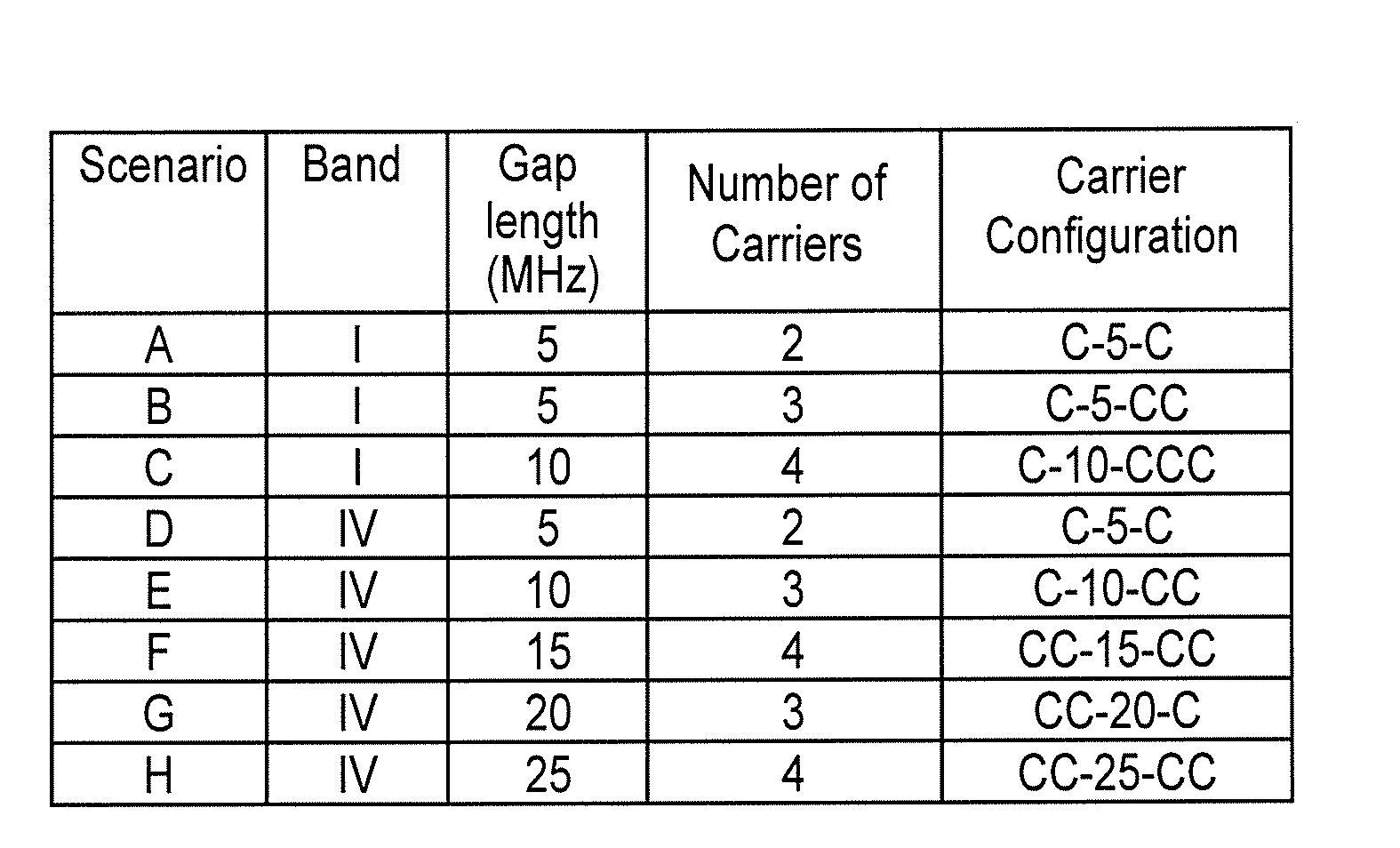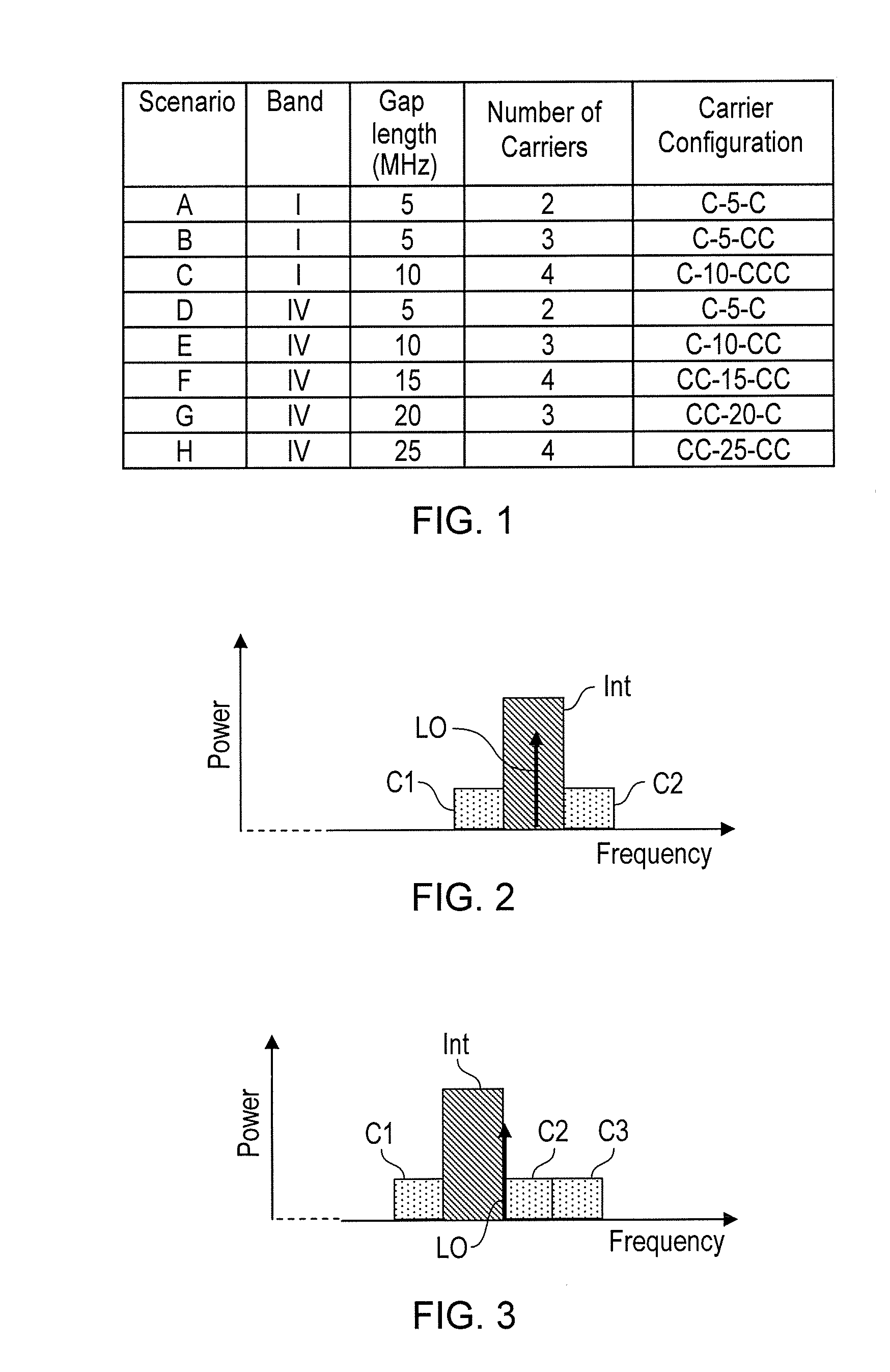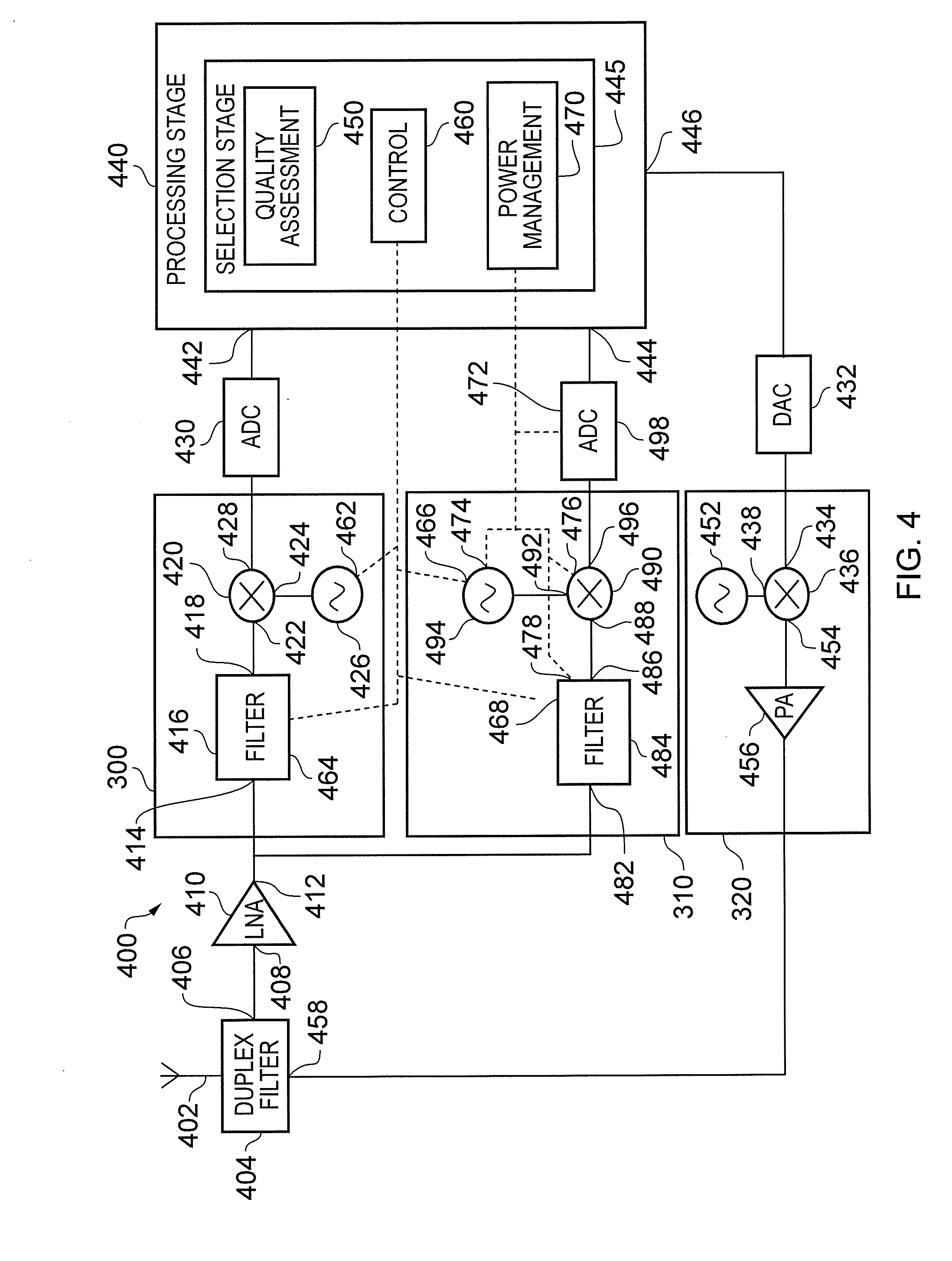Non-Contiguous Carrier Aggregation
a non-contiguous carrier and carrier technology, applied in the field of non-contiguous carrier aggregation, can solve the problems of inability to assume the same power received in the wanted carrier, the inability to accept the interference signal of an interference, and the inability to accept the interference signal. the effect of reducing the complexity, reducing the cost, and improving the reliability of selection
- Summary
- Abstract
- Description
- Claims
- Application Information
AI Technical Summary
Benefits of technology
Problems solved by technology
Method used
Image
Examples
example 1
[0070]In response to a request, received from a NodeB, for the UE to perform inter-frequency measurements on a certain set of carriers in order to schedule non-contiguous carrier aggregation, the UE, or wireless communication apparatus 400, performs the following steps:[0071]1. Using the single-receiver architecture, change the position of the single LO during a single measurement period or gap to the middle of configuration C1xC2C3;[0072]2. Compute RSSI and Ec / No for the three wanted carriers, RSSI1, RSSI2, RSSI3, where Ec is the energy of the wanted signal (by default calculated on a common pilot channel), No is noise-plus-interference, and RSSIj is received signal strength indicator for carrierj, j=1 . . . 3;[0073]3. Compute the RSSI in the gap, RSSIG;[0074]4. Compare RSSIG with RSSI1, RSSI2, RSSI3 as follows. If RSSIG >A*(RSSI1+RSSI2+RSSI3) / 3, where A is a predetermined threshold, (note that the equation is in linear domain), use the dual-receiver the single-receiver architectur...
example 2
[0077]In response to a request, received from a NodeB, for the UE to perform inter-frequency measurements on a certain set of carriers in order to schedule non-contiguous carrier aggregation, the UE performs the following steps:[0078]1. Using the single-receiver architecture, change the position of the single LO during a (single) measurement time period or gap to the middle of configuration C1xC2C3;[0079]2. Compute RSSI and Ec / No for the three wanted carriers, RSSI1, RSSI2, RSSI3, Ec / No1, Ec / No2 and Ec / No3, where Ec / Noj is the signal to noise-plus-interference ratio for carrierj, j=1 . . . 3;[0080]3. Compare RSSI1, RSSI2 and RSSI3 and Ec / No1, Ec / No2 and Ec / No3 as follows. Depending on the configuration, the UE knows a priori which carrier can be affected by the image problem; in this example this is C2. In general let's call Cimage the carrier which can be affected by the image problem and Cnoimage the set of carriers not affected by image problem, hence if RSSICimage>A*ECnoimage[RS...
example 3
[0085]If the signalling is not in place, that is, if the NodeB does not request the UE to perform the inter-frequency measurements before scheduling non-contiguous carrier aggregation, the UE can start supporting the scheduled non contiguous carrier aggregation configuration by using the dual-receiver architecture and operating in accordance with example 7 or 8 during the communication to reduce power consumption by optimizing its receiver when the interference level in the gap is below a certain threshold.
PUM
 Login to View More
Login to View More Abstract
Description
Claims
Application Information
 Login to View More
Login to View More - R&D
- Intellectual Property
- Life Sciences
- Materials
- Tech Scout
- Unparalleled Data Quality
- Higher Quality Content
- 60% Fewer Hallucinations
Browse by: Latest US Patents, China's latest patents, Technical Efficacy Thesaurus, Application Domain, Technology Topic, Popular Technical Reports.
© 2025 PatSnap. All rights reserved.Legal|Privacy policy|Modern Slavery Act Transparency Statement|Sitemap|About US| Contact US: help@patsnap.com



